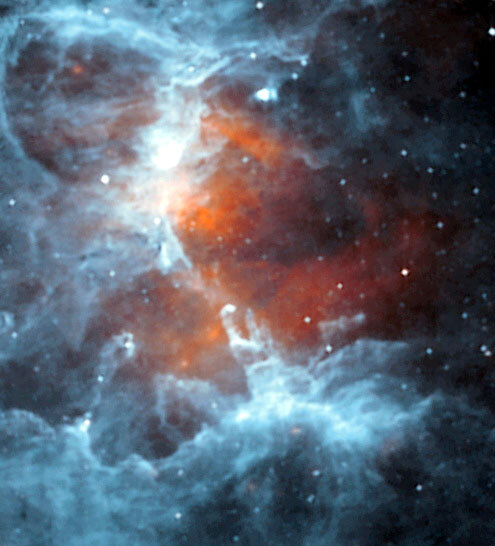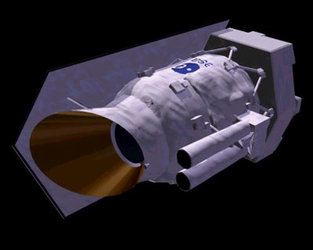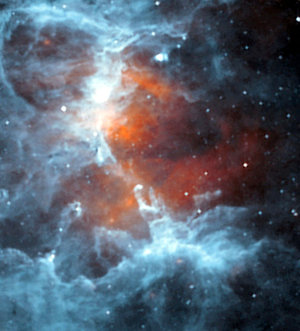Golden legacy for ESA's observatory
ESA PR 46-2003. Scientists are celebrating the thousandth scientific publication from ESA's Infrared Space Observatory (ISO). ISO is fast becoming one of the world's most productive space missions, even though its operational life ended in 1998.
ISO was the world’s first space observatory able to see the sky in infrared light. Using its eyes, we have discovered many new phenomena that have radically changed our view of the Universe.
Everybody knows that when something is heated it glows. However things also glow with a light our eyes do not detect at room temperature, this is infrared light. Infrared telescopes do not work well on the Earth’s surface because such light is absorbed by the atmosphere.

ISO looks at the cold parts of the universe, usually the 'cold and dusty' parts. ISO peered into clouds of dust and gas where stars are being born, observing for the first time the earliest steps of star formation. It discovered, for example, that stars begin to form at temperatures as low as -250°C or less.
Scientists were able to follow the evolution of dust from where it is produced (that is, old stars - the massive 'dust factories'), to the regions where it forms new planetary systems. ISO found that most young stars are surrounded by discs of dust that could harbour planets. The observatory also analysed the chemical composition of the cosmic dust, thereby opening up a new field of research, ‘astromineralogy’.
With ISO we have been able to discover the presence of water in many different regions in space. Another new discipline, 'astrochemistry', was boosted when ISO discovered that the water molecule is common in the Universe, even in distant galaxies, and complex organic molecules like benzene form easily in the surroundings of some stars.

"ISO results are impacting most fields of astronomical research, almost literally from comets to cosmology," explains Alberto Salama, ISO Project Scientist. "Some results answer questions. Others open new fields. Some are already being followed up by existing telescopes; others have to await future facilities."
When ISO's operational life finished, in 1998, its observations became freely available to the world scientific community via ISO’s data archive. In May 2003, the 'milestone number' of 1000 scientific papers was reached. Even now, ISO's data archive remains a valuable source of new results. For example, some of the latest papers describe the detection of water in 'protostars', which are stars in the process of being born, and studies of numerous close-by galaxies.
"Of course we were confident ISO was going to do very well, but its actual productivity is well beyond our expectations. The publication rate does not even seem to have peaked yet! We expect many more results," Salama says.







